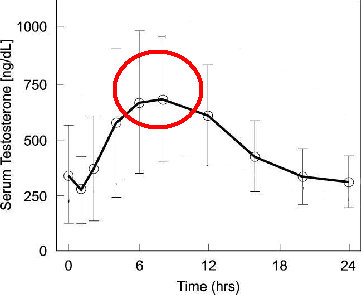



A detailed physical examination and biochemical investigation is mandatory in a person suspected of LOH. The most widely accepted
biochemical parameters used to establish the presence of hypogonadism are the measurement of blood testosterone levels and free testosterone.
Free testosterone is calculated from measured total testosterone and SHBG or measured by a reliable free testosterone laboratory.
Several blood tests to measure serum testosterone are available; with total testosterone the most commonly used but requires awareness
that its values may not reflect the amount of metabolically active testosterone. Therefore, measurement of free testosterone may more
closely correlate with clinical symptoms. Free testosterone can be measured directly (expensive and high variability between laboratories)
or calculated from measured total testosterone and SHBG (sex hormone binding globulin).
Free testosterone is calculated by inputting
serum total testosterone and SHBG into a formula which is available at the ISSAM website.
There are no generally accepted lower limits of normal. However, there is a general agreement that total testosterone levels above
12 nmol/L (346 ng/dL) or free testosterone levels above 250 pmol/L (72 pg/mL) do not require testosterone substitution. Similarly,
there is consensus that serum total testosterone levels below 8 nmol/L (231 ng/dL) or free testosterone below 180 pmol/L (52 pg/mL)
would benefit from testosterone replacement therapy.



